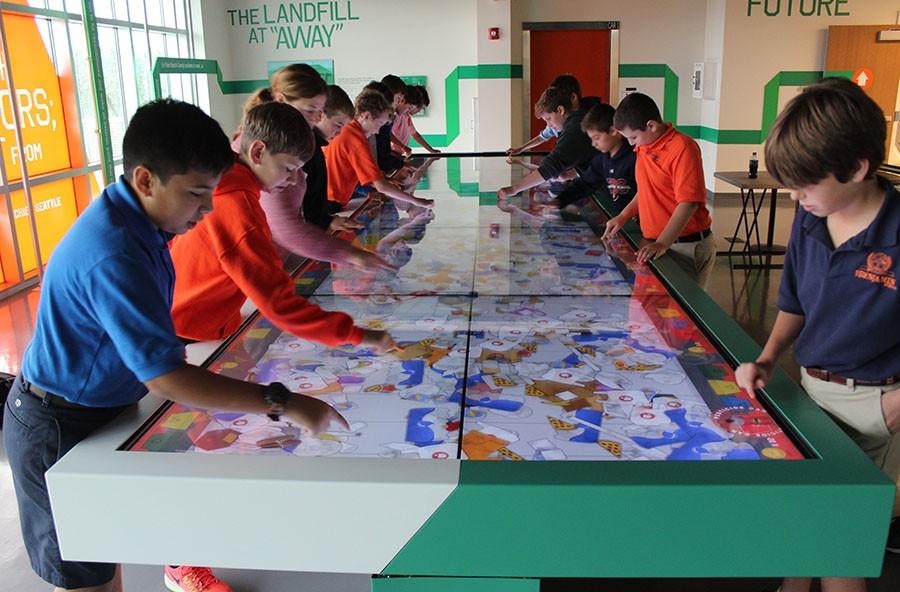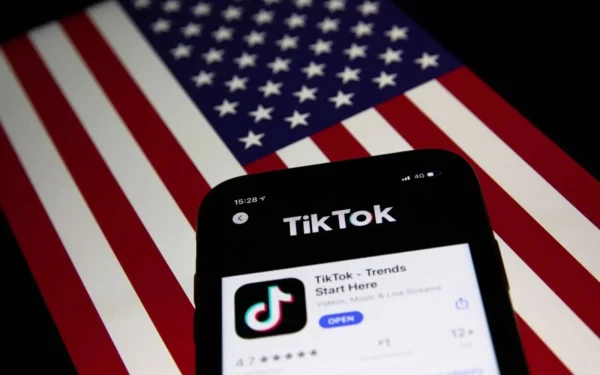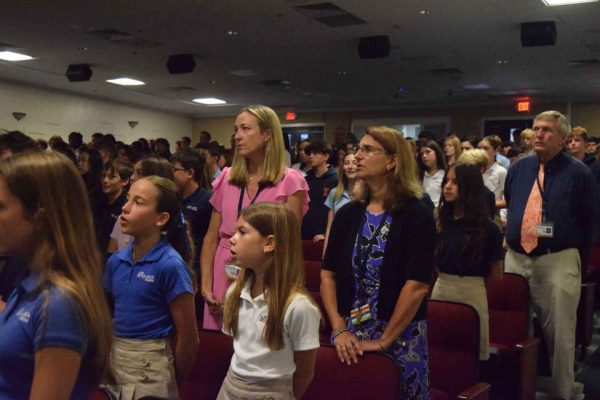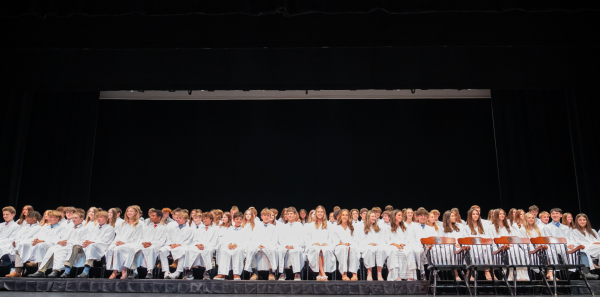What a Waste
The sixth grade recently took an eye-opening trip to the Palm Beach County Solid Waste Authority.
The sixth graders play the recycle game on the giant interactive table at the SWA facility.
A trip to the local dump doesn’t sound like much fun at all, but when you’re talking about the Solid Waste Authority (SWA) of Palm Beach County, the educational experience there doesn’t get much cooler.
On Wednesday, January 5, the entire sixth grade traveled to the SWA in West Palm Beach. According to the SWA’s website (www.swa.org), the governmental agency employs approximately 400 employees and provides solid waste disposal and recycling services and programs to the county’s 1.4 million residents and businesses. In addition, the SWA has built an award-winning integrated system of facilities that combines recycling, renewable energy, and landfilling to effectively manage the county’s waste.
The SWA actually has two facilities – Renewable Energy Facility 1 (REF 1) which was built in 1989 and the newer REF 2 which opened last year. Both sites turn the garbage collected from the county’s homes and businesses into electricity. The students visited REF 2 and saw first-hand the amount of garbage the facility handles. “The amount of trash was immense,” said sixth grader Logan Sorensen. “It was piles and piles.”
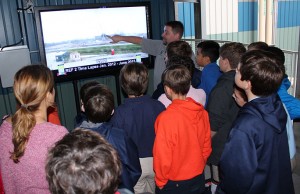
Mr. Elkins points out specific parts of the new REF 2 facility to the sixth graders on a time lapse video that shows the months of construction in only a few minutes.
According to Brian Elkins, one of the SWA’s educational specialists who also happened to be one of the sixth-grade’s tour guides, “REF 2 reduces the amount of waste going to SWA’s landfill by up to 98 percent.” This ensures that the landfill will last until about 2045. “At the same time, said Elkins, “the facility generates 100 megawatts of electricity for the people in Palm Beach County.” According the the SWA website, that’s enough electricity to power an estimated 44,000 homes and businesses, or about all the homes in Boca Raton.
The facilities turn the garbage into electricity via boiling. The refuse is divided into burnable and unburnable waste. So the burnable waste is fed into large boilers via conveyors. The boiled garbage produces a tremendous amount of steam which drives a turbine generator to make electricity. The toxins from the boiling are cleaned using benign chemicals, carbon spray, and a lime slurry so those fumes and harmful particles are not released into the air. Any ash or non-burnable material left over is placed in the nearby landfill.
“Dignitaries from all over the world come to our facilities because they are the cleanest and most efficient in the world,” said Mr. Elkins. “In fact, we are known as the Disney World of waste because of how innovative and clean we are.”
The sixth grade was split in half, with one half traveling over in the morning, and the other in the afternoon. It was an important trip for the students who are focusing on environmental science. The organizer of the trip, sixth-grade science teacher Mrs. Mandy Sukhu, said she “wanted to take the sixth grade to see where the things they throw away go.”
Because the grade is learning about recycling right now, the trip strengthened the students’ overall understanding of the material, and was a nice break from the classroom. “I learned about how much we were really wasting,” said sixth grader Tre Williams, “and it made me realize we had to do better.”
The students were able to play a recycling game at the facility using a state-of-the-art horizontal touchscreen that was more than 15 feet long! The screen turned into a large digital conveyor belt, and the students had to find recyclable and hazardous waste material as it moved along, and place the material in the appropriate bins. The screen also served as an interactive map of Palm Beach County that displayed information about conservation areas and the SWA’s facilities and operations.
On their tour, the sixth graders were also shown the roof of REF 2 which is a green roof, meaning it is outfitted with a number of different flowers and plants. This promotes oxygen creation, beautification of the building, and the population growth of helpful insects like bees and butterflies, while also keeping the building naturally cooler, therefore making the facility less reliant on electricity for heating and cooling.
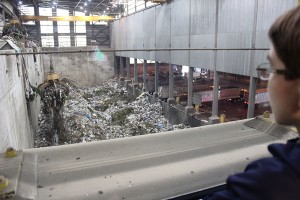
Sixth grader Jakob Kroll looks out over the massive dumping site at REF 2 as a giant claw grabs a heapful of trash for boiling.
The students also received an up-close look at the large repository where the garbage trucks dump the garbage they collect from all over the county. Giant steel claws grab large portions of the
garbage and place them on the conveyors to be boiled.
“It didn’t smell very good looking out over the garbage,” said sixth grader Zach Loceff. “It was like old strawberry yogurt.”
Despite the smell, the students learned a lot and found the trip to be interesting. “I learned how they turn trash into something useful,” said sixth grader Demi den Bakker.
